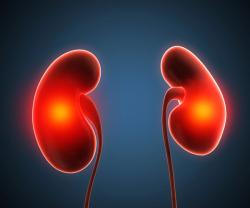
OR WAIT null SECS
Gross Hematuria Observed in Patients with IgA Nephropathy After COVID-19 Vaccination
In the new study, 71% of the patients who developed gross hematuria after a COVID-19 vaccination were females, and for 92% of the patients, the investigators observed gross hematuria had developed after the second or subsequent vaccinations.
For patients with immunoglobulin A nephropathy (IgAN), gross hematuria was more likely to develop in females and after the second or subsequent COVID-19 vaccinations, according to a recent study.1
Previous studies found gross hematuria developed after an upper respiratory tract infection in 30% – 40% of patients with IgAN, except the cause remains unknown. Another study back in June reported 4 cases of IgAN patients developed gross hematuria after a CoV-2 infection. The gross hematuria developed 2 days after experiencing COVID-19 related symptoms.2
“It is noteworthy that gross hematuria developed in each case after SARS-CoV-2 infection with different clinical characteristics, with differing treatment status for IgAN, vaccination history, and timing of SARS-CoV-2 infection,” the investigators of the earlier study wrote. “Although 3 patients (cases 1, 3, and 5) had been vaccinated for COVID-19, no patient presented with gross hematuria in relation to vaccination.”
In the new study focusing on the association between gross hematuria and COVID-19 vaccinations, the investigators, led by Ryousuke Aoki from Juntendo University in Tokyo, Japan, wanted to better understand the mechanisms of gross hematuria in patients with immunoglobulin A nephropathy (IgAN). The prospective cohort contained 82 patients who developed gross hematuria after the COVID-19 vaccination. The investigators collected their participant sample from both patients of Juntendo University Hospital or Juntendo University Urayasu Hospital between May 11, 2023, and July 31, 2022.
Since serum and urinary galactose deficient IgA1 levels are associated with the development of IgAN in patients with gross hematuria after the COVID-19 vaccination, the investigators collected both serum and urinary samples from baseline to six months. The investigators collected serum and urine sample from the baseline to six months. They measured IgA1 by enzyme-linked immunosorbent assays.1
Most (71%) of the patients who developed gross hematuria after a COVID-19 vaccination were females (n = 58), and 92% of the patients developed gross hematuria after the second or subsequent vaccinations.
The data suggests galactose-deficient IgA1 levels in the glomeruli was boosted by a COVID-19 vaccination more than just increased serum levels. Serum levels had been similar from month 0 to month 6 (gross hematuria 0: 5135.7 ng/mL, gross hematuria 6: 5354.8 ng/mL; P=.319). Meanwhile urinary levels were increased at the time of the vaccination (gross hematuria 0: 42.7ng/mL, gross hematuria 6 31.7ng/mL; P = .030).
“Our cohort study suggests that [gross hematuria] in IgAN is triggered by some alternations in glomerulus itself that facilitate the deposition of [galactose-deficient]-IgA1,” investigators wrote. “Increased incidence of [gross hematuria] after COVID-19 vaccination in females and after the second or subsequent vaccinations may help to clarify the mechanism of [gross hematuria] in detail.”
References
- Aoki, R, Nihei, Y, Matsuzaki, K. Elucidating the Mechanism of Gross Hematuria in IgA Nephropathy: Analysis of the Biomarkers in Patients with Gross Hematuria After COVID-19 Vaccination. November 2, 2023. https://www.asn-online.org/education/kidneyweek/2023/program-abstract.aspx?controlId=3945556#prettyPhoto. Accessed November 16, 2023.
- Ueda H, Okabe M, Shimizu A, et al. Gross Hematuria Following SARS-CoV-2 Infection in IgA Nephropathy: A Report of 5 Cases. Kidney Med. 2023;5(6):100627. doi:10.1016/j.xkme.2023.100627


